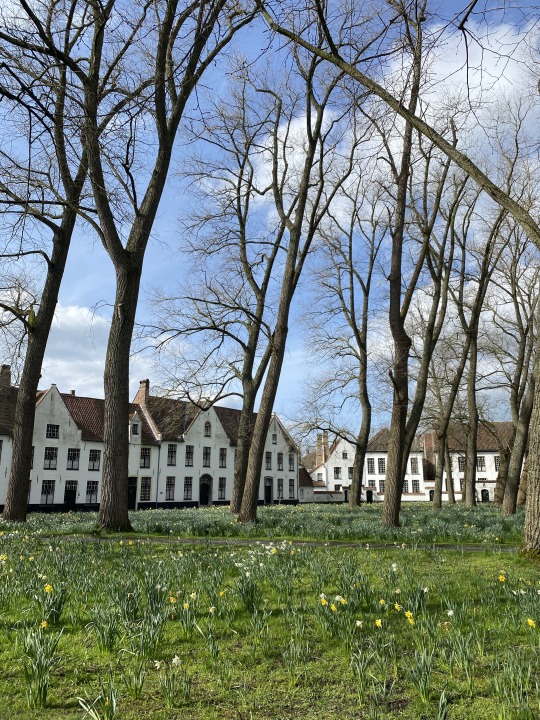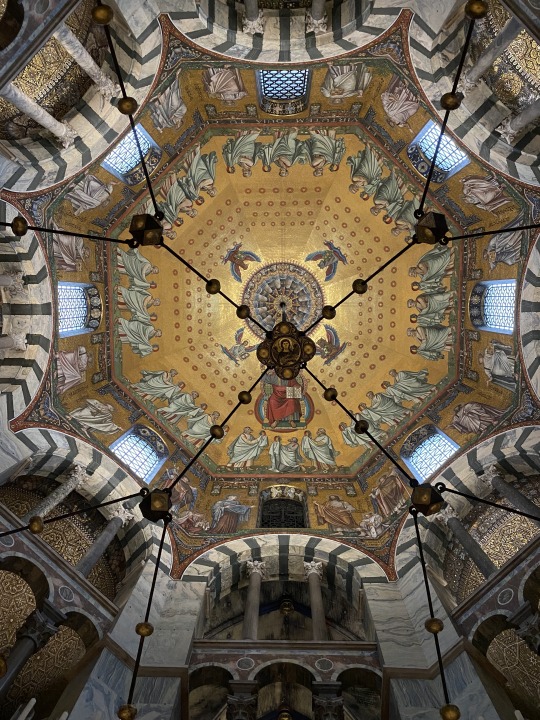Text

Westminster Abbey was an obvious choice due to its prominence in England's culture and the monarchy. Its roots can be traced back to the 10th century when the kings built a benedictine monastery in downtown London. Later on, there was a church built adjacent to it, given the name “Westminster Abbey '' to distinguish it from St. Paul's Cathedral. King Henry III rebuilt the church in a beautiful Gothic style, and it was decreed as the burial site for the monarchy. Similar to St. Paul, Westminster was seized by King Henry VIII during the Reformation movement, whose impact is seen clearly in the church today. Westminster Abbey has a memorial for all of their lives during the Reformation due to their Christian conscience in their rejection of the Catholic church's evil actions. It is fascinating that the church is still receiving updates and improvements today. In 1998, the “Ten Martyrs” statue was unveiled over one of Westminster Abbey's entrances, attracting even more international attention. This church is of great historical significance, and I'm glad we had the chance to visit it.
0 notes
Text

These two churches serve as an anomaly in Western Europe considering the region's dicey religious history. Both churches, one Catholic and one Protestant, are ideologically and architecturally distinct. The Basilica of St. Servatius was built in a Romanesque style, with large, rounded arches throughout. It has a plethora of Romanesque sculptures as well, depicting the life of the common man and their interaction with plants and animals. St John's church, named after John the Baptist, has many Gothic elements, with pointed arches throughout and an impressive baptistry added many years after its construction. The proximity between the churches is notable, especially considering the Reformation movement. However, they serve as a reminder that coexistence was and still is possible between different churches, even though that coexistence might not always be the most pleasant. The churches used to interrupt each other's services by ringing their bells as loud as possible. I was surprised to learn that the Basilica is considered one of the oldest standing churches in the Netherlands, and it has such an impressive history.
0 notes
Text

The Béguinage has a unique history among religious institutions during the same period. The Béguinage is a Christian community named after the Beguines, women who served the church and devoted themselves to God but didn't take any formal vows like nuns do. The women went out into the community and did many jobs, such as teaching, cooking, and sowing, but always returned to the Béguinage to stay together. I chose The Béguinage because it displays some of the good work the Catholic church did in Europe, despite its marred reputation. They offered a safe place for women of all classes to stay, work, and devote themselves to God, sheltered from the circumstances of the outside world. They stood strong even during the Reformation movement and the chaos that ensued. I found it interesting that there are 13 Béguinage's in Belgium alone, displaying, once again, the Catholic church's influence on the region.
0 notes
Text

The Aachen Cathedral is one of the oldest and most prominent cathedrals in Europe. Charlemagne, emperor of the Holy Roman Empire, ordered its construction in the 800s as his chapel. The church's architectural magnificence is shown through both the Palatine Chapel and the Gothic choir, a late addition to the structure. The Palatine Chapel is an octagonal room with high ceilings and bronze accents throughout. The room is separated between a high section and a lower one, with Romanesque arches and groin vaults dominating the ceiling. The very top is painted with detailed images of the Apostles and different stories from scripture. The chapel served as the coronation spot for many kings and queens and was soon a place of pilgrimage after its canonization by the pope. The cathedral saw so many visitors that a beautiful Gothic choir was made in the 1300s, complete with pointed arches and large stained-glass windows, telling countless biblical stories. These biblical images in the church's design remained important for hundreds of years. The vast majority of people during these times were illiterate, and a primary source of biblical information, for them, was these works of art. This was even more important before the Reformation period because scripture was written and read in Latin under the catholic church in Europe. The most surprising thing to me about the Aix-la-Chapelle was that it was one of the first twelve Unesco world heritage sites and one of the most important churches in the world, and I had never heard of it until stepping foot in Aachen.
0 notes
Text

St. Paul's Cathedral is an underrated and important church from the Reformation movement. This London church is a significant cultural landmark in England and a vessel for the Reformation movement in England. Passionate theologians from all around Europe would come to preach and discuss in its halls, including Martin Luther. St Paul was historically a Catholic church, but after the pope refused to annul King Harry's marriage, it slowly became part of the Church of England, the Anglican church. This transition can be seen through the use of the nave, which was turned into a marketplace for a brief time during the Reformation movement. The thing I found most fascinating about this church was its history of physical destruction. There was a lightning strike in 1561 that left the spire in ruin, and its rebuilding efforts were hindered by the English Civil War that broke out soon after.
2 notes
·
View notes